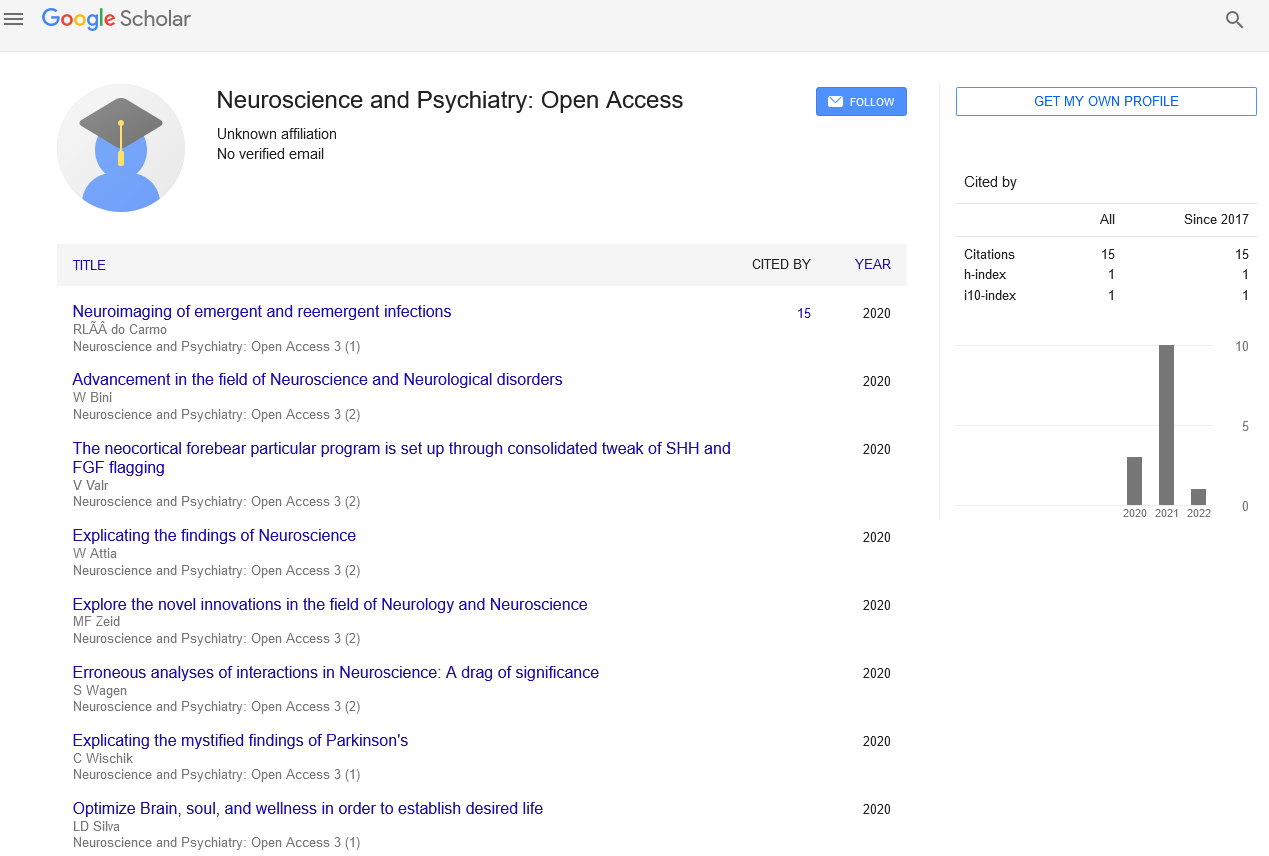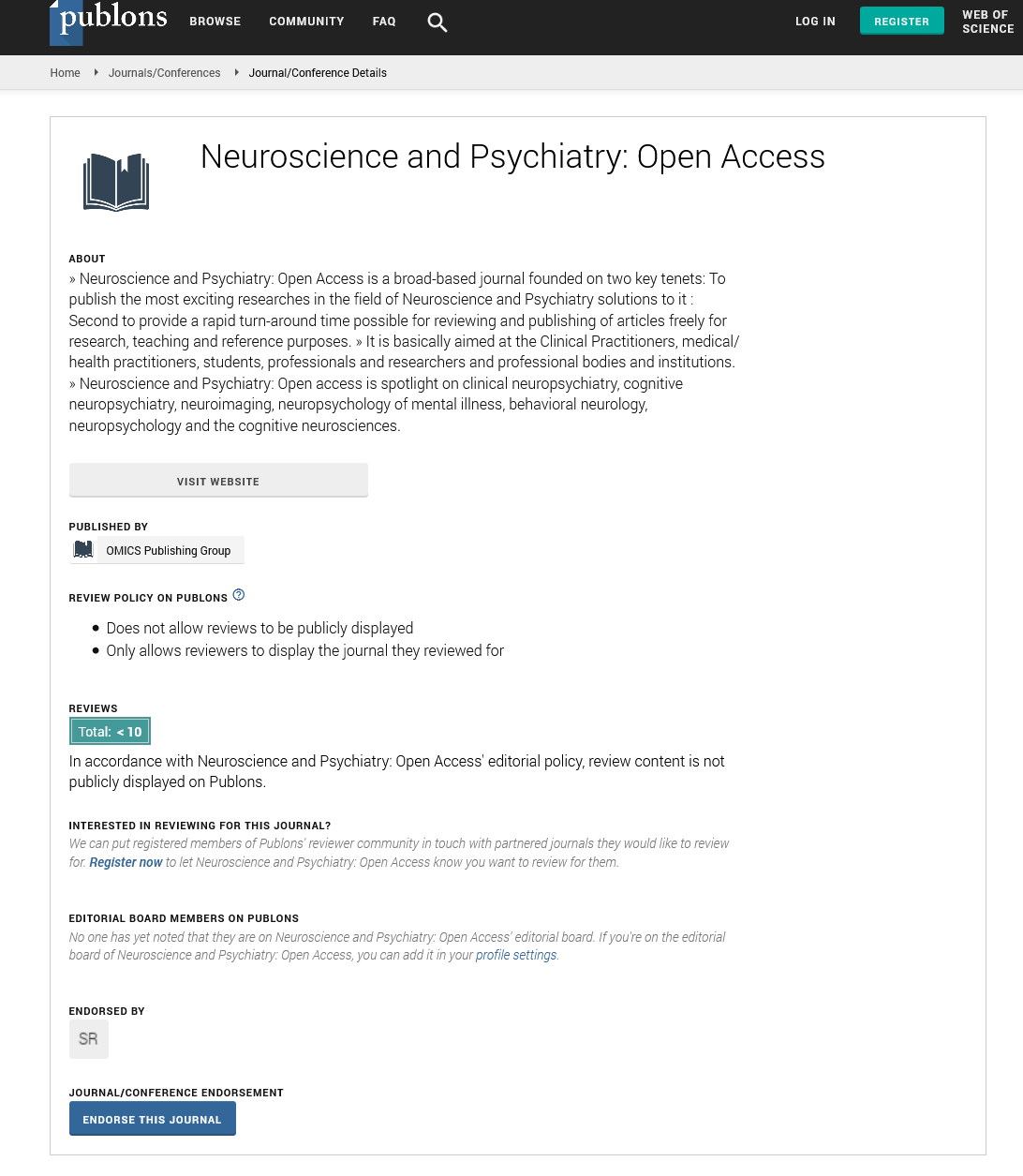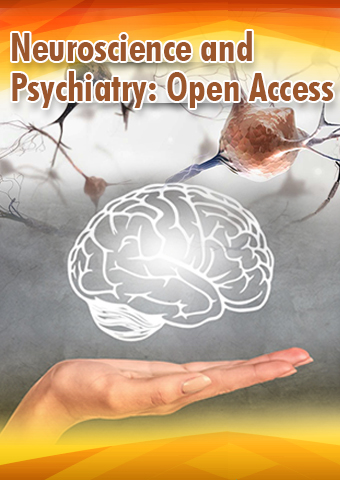Perspective - Neuroscience and Psychiatry: Open Access (2024) Volume 7, Issue 3
Navigating the Peaks and Valleys of Bipolar Disorder: Insights from Neuroscience and Psychiatry
- Corresponding Author:
- Jun Ikezawa
Department of Psychiatry, Yokohama City University, Yokohama, Japan
E-mail: jun_ikeza6@tmhp.jp
Received: 23-04-2024, Manuscript No. NPOA-24-133881; Editor assigned: 26-04-2024, PreQC No. NPOA-24-133881 (PQ); Reviewed: 10-05-2024, QC No. NPOA-24-133881; Revised: 20-05-2024, Manuscript No. NPOA-24-133881 (R); Published: 27-05-2024, DOI: 10.47532/npoa.2024.7(3).216-217
Introduction
Bipolar disorder, characterized by recurrent episodes of mania, hypomania, and depression, stands as a complex and multifaceted mental illness that profoundly impacts mood, behavior, and daily functioning. In this comprehensive exploration, we delve into the depths of bipolar disorder, unraveling its clinical manifestations, neurobiological underpinnings, diagnostic challenges, treatment strategies, and avenues for future research within the realms of neuroscience and psychiatry.
Description
Understanding bipolar disorder: The ebb and flow of mood states
Bipolar disorder encompasses distinct mood states, including manic episodes marked by elevated mood, impulsivity, grandiosity, and decreased need for sleep, and depressive episodes characterized by profound sadness, fatigue, anhedonia, and suicidal ideation. Hypomanic episodes represent a milder form of mania with similar symptoms but less severe impairment in daily functioning.
The cyclical nature of bipolar disorder, alternating between manic/hypomanic and depressive episodes, distinguishes it from unipolar depression and other mood disorders. Rapid cycling bipolar disorder involves frequent mood shifts, while mixed episodes feature concurrent manic and depressive symptoms, posing diagnostic and therapeutic challenges.
Neurobiology of bipolar disorder: Insights into brain circuitry and neurochemical imbalance
Neuroscientific research elucidates the neurobiological basis of bipolar disorder, highlighting abnormalities in brain circuitry, neurotransmitter systems, and neuroplasticity mechanisms. Structural neuroimaging studies reveal alterations in limbic system structures (e.g., amygdala, hippocampus), prefrontal cortex, and white matter tracts implicated in emotion regulation, reward processing, and cognitive control.
Dysregulation of neurotransmitters, including dopamine, serotonin, norepinephrine, and glutamate, underlies mood instability, impulsivity, and psychosis in bipolar disorder. Dopaminergic hyperactivity during manic episodes contributes to elevated mood and reward-seeking behaviors, while serotonergic deficits in depressive phases correlate with dysphoria and decreased pleasure. Glutamatergic dysfunction and altered GABAergic signaling further disrupt synaptic transmission and neural circuitry connectivity in bipolar disorder pathophysiology.
Diagnostic challenges and differential diagnosis
Diagnosing bipolar disorder requires careful clinical evaluation, including comprehensive psychiatric assessments, mood symptom monitoring, medical history review, and collateral information from family members or caregivers. The Diagnostic and Statistical Manual of Mental Disorders (DSM-5) delineates criteria for bipolar I disorder (presence of manic episodes), bipolar II disorder (hypomanic and depressive episodes), cyclothymic disorder (chronic mood fluctuations), and other specified and unspecified bipolar and related disorders.
Differential diagnosis involves distinguishing bipolar disorder from unipolar depression, substance-induced mood disorders, personality disorders, Attention-Deficit/Hyperactivity Disorder (ADHD), and medical conditions presenting with mood symptoms. Screening tools, mood tracking apps, and structured interviews aid in differential diagnosis and treatment planning, ensuring accurate characterization of mood states and symptom severity.
Treatment approaches: Balancing mood stabilization and symptom management
The management of bipolar disorder integrates pharmacological interventions, psychotherapy, lifestyle modifications, and psychosocial support to stabilize mood, prevent relapse, and improve quality of life. Mood stabilizers, such as lithium, anticonvulsants (e.g., valproate, lamotrigine), and atypical antipsychotics (e.g., quetiapine, olanzapine) target manic and depressive symptoms, regulate circadian rhythms, and modulate neurotransmitter activity.
Adjunctive therapies, including antidepressants (with caution to avoid inducing mania), anxiolytics, and sleep aids, address comorbid symptoms, anxiety disorders, and sleep disturbances in bipolar disorder management. Psychotherapy modalities, such as Cognitive-Behavioral Therapy (CBT), Interpersonal and Social Rhythm Therapy (IPSRT), and Family Focused Therapy (FFT), enhance coping skills, improve medication adherence, and foster relapse prevention strategies.
Neuroplasticity and recovery in bipolar disorder
Neuroplasticity mechanisms play a role in recovery, resilience, and functional adaptation in individuals with bipolar disorder. Psychoeducation, psychotherapeutic interventions, and cognitive remediation programs capitalize on neuroplasticity to promote adaptive coping strategies, emotion regulation skills, and cognitive restructuring in bipolar disorder management.
Lifestyle interventions, including regular exercise, healthy diet, sleep hygiene practices, and stress management techniques, support neuroplasticity, neurogenesis, and neurotrophic support in bipolar disorder. Mindfulness-based practices, meditation, and yoga cultivate resilience, enhance self-awareness, and facilitate emotional balance, complementing pharmacotherapy and psychotherapy interventions.
Future directions in bipolar disorder research: Precision psychiatry and personalized treatments
The future of bipolar disorder research embraces precision psychiatry paradigms that tailor treatments to individualized symptom profiles, neurobiological markers, genetic susceptibilities, and treatment response patterns. Biomarker discovery initiatives, neuroimaging technologies, and genetic studies elucidate personalized risk factors, treatment targets, and prognostic indicators in bipolar disorder.
Advancements in digital health technologies, telemedicine platforms, and mobile mental health apps facilitate remote monitoring, early intervention, and relapse prediction in bipolar disorder management. Collaborative consortia, data sharing initiatives, and open science frameworks accelerate translational research, biomarker validation, and novel therapeutic discoveries that optimize outcomes and recovery trajectories for individuals living with bipolar disorder.
Conclusion
In conclusion, bipolar disorder represents a complex interplay of genetic, neurobiological, psychological, and environmental factors that shape mood fluctuations, cognitive impairments, and functional impairments. By embracing the power of neuroplasticity, neuroscience and psychiatry converge to illuminate pathways for recovery, resilience, and personalized treatments that empower individuals with bipolar disorder to navigate life’s peaks and valleys with hope, support, and effective interventions.
As we navigate the complexities of bipolar disorder, interdisciplinary collaborations, patient- centered care models, and innovative research initiatives pave the way for transformative discoveries, stigma reduction, and holistic approaches that promote brain health, well- being, and recovery for individuals and families affected by bipolar disorder.


